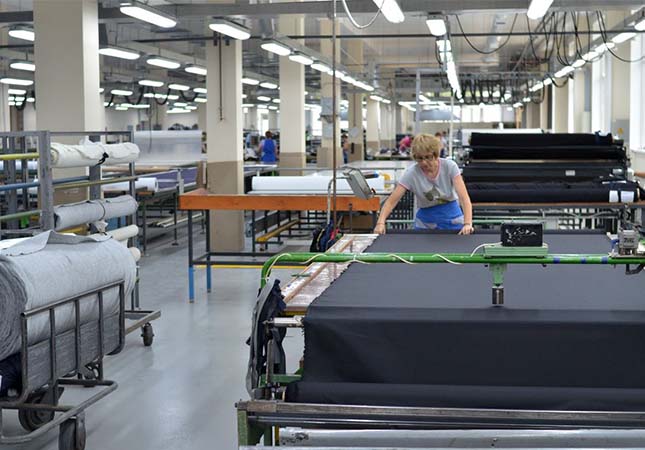The industry is involved in the production of textiles, fabrics, and garments that are used in various applications, including clothing, household items, industrial products, and technical textiles. One of the critical aspects of textile production is the visual inspection of fabrics to detect defects, which can significantly affect the quality of the final product. This blog will introduce different types of visual inspection defects detection for fabrics in the textile industry.
 Different Types of Visual Inspection Defects Detection for Fabrics in the Textile Industry
Different Types of Visual Inspection Defects Detection for Fabrics in the Textile Industry
There are various types of visual inspection defects detection for fabrics in the textile industry.
1. Color variation
Color variation is a common defect in fabrics that can be detected through visual inspection. Color variation occurs when the dyeing process is not uniform, leading to uneven color distribution. The inspector checks the fabric against the specified color standards and compares it to the approved sample. If there is a noticeable color difference, the fabric is considered defective.
2. Stains
Stains are caused by various factors such as oil, grease, dirt, and ink. The inspector checks the fabric for any discoloration or marks that are not part of the design. Stains can significantly affect the appearance of the fabric and reduce its value.
3. Holes
Holes are a type of fabric defect that can be caused by several factors such as insects, abrasion, and manufacturing defects. The inspector checks the fabric for any holes or tears that can affect its appearance and strength.
4. Skewness
Skewness is a defect that occurs when the fabric is not square or rectangular. The inspector checks the fabric for any unevenness in its shape or size. Skewness can occur during the weaving or finishing process and can significantly affect the fabric's appearance and fit.
5. Pilling
Pilling is a common defect in fabrics that occurs when the fibers on the surface of the fabric become tangled and form small balls. Pilling is common in fabrics made from natural fibers such as wool and cotton.
6. Uneven print
Uneven print can significantly affect the appearance of the fabric and reduce its value. The inspector checks the fabric for any variations in the printed design and compares it to the approved sample.
7. Broken yarns
The inspector checks the fabric for any broken or missing yarns that can affect its appearance and strength. Broken yarns can cause the fabric to unravel or tear, leading to significant quality issues.
8. Fabric distortion
Fabric distortion is a defect that occurs when the fabric is not uniform or has a distorted shape, which can significantly affect the fabric's appearance, fit, and performance.
9. Shading
Shading is a defect that occurs when the color of the fabric is not uniform, which significantly affects the appearance of the fabric and reduces its value. The inspector checks the fabric for any variations in color and compares it to the approved sample.
Oil stains
Oil stains are a type of defect that can occur during the manufacturing process and affect its appearance and texture. Oil stains can be challenging to remove and can significantly reduce the fabric's value.
Conclusion
In conclusion, visual inspection is a crucial process in the textile industry for detecting defects and imperfections in fabrics. The types of defects discussed above are just a few examples of what inspectors look for during the inspection process. By detecting and correcting these defects, manufacturers can produce high-quality fabrics that meet the industry's standards and customer expectations.
SUNTECH's ST-ACI-I automatic camera inspection system ( for Fabric Inspection Machine ) is praised by customers in China and abroad, would be an ideal choice for the manufacturers who want to improve the quality of the productions.Other than that, SUNTECH provides the textile industry machines to the whole world, helps them to improve the efficient, decrease the labor costs. SUNTECH offers numerous types of textile machinery: visual inspection defects, fabric measure and cutting machine, fabric swatch cutter, beam truck, trolley lift system, fabric roll cutting machine etc. If you are interested in us, please contact us now!




